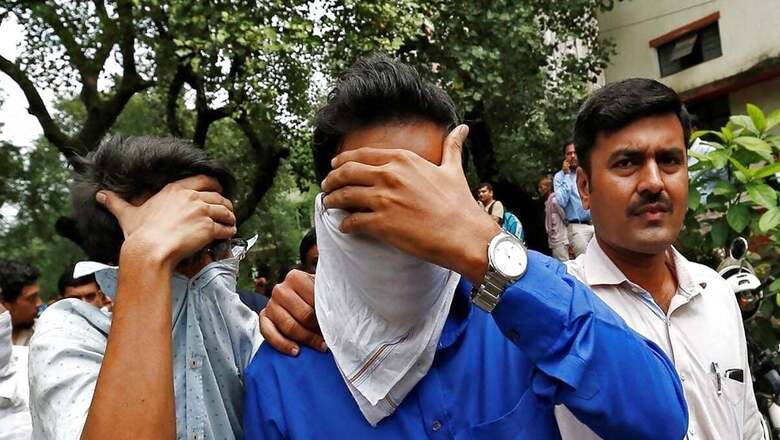
views
All intelligence agencies and enforcement agencies depend on informants to gain reliable information about clandestine illegal activities. These informants give credible information about organised crime, general crimes, domestic terrorism, white-collar crime, drug trafficking, international terrorism, gold smuggling, money laundering, cybercrime, and espionage. Informants are also known as “assets”.
Most informants themselves are part of a criminal gang or a rival gang. Some of the more common motivational factors encountered by enforcement investigators, for divulging information include fear, revenge, money, repentance, and altruism. By and large, informants are people who ‘trade information on the criminal world in exchange for money’. The risk of physical harm to informants – including acts of violence and death threats by those within the (criminal) community – should they be unmasked as an informant, is like the proverbial sword of Damocles, on the neck of every informant.
Members of criminal gangs are supposed to maintain absolute secrecy, under all circumstances, and not divulge any details whatsoever about the criminal organisation they work in their operations, links and other gang members. This code of silence towards law enforcement forms the bedrock of criminal ethics among organised crime clans, be it the Italian mafia, Japanese Yakuza, Russian Bratva, the Medellin cartel, and other gangs that operate throughout the world. Under this ironclad ethos, gang members are strictly forbidden to reveal details of the criminal underworld to the state, even if it means that they must go to prison or face the noose themselves. But, there are those who risk their lives for the ‘reward amount’, hoping to retire and lead a comfortable life.
Shahnaz Hamza, a native of Pallikkara, in the Kasaragod district of Kerala, took the risky route of becoming a customs informer, and thereby unwittingly became the first martyr among customs informers in Kerala, as also the first informer to get murdered, for leaking secret information about the movement of contraband gold.
Kasaragod is the northernmost and also the last (14th) district in the state comprising Manjeswar, Vellarikundu and Hosdurg taluks. The district has a coastline of around 29.3 kilometres and a very vast midland. It also consists of high mountain ranges, rivers, hillocks, beaches, shrines and forts. The district is notorious, as it is the home of innumerable gold smugglers, both big-time and small-time operators. Notable names are those of M.B. Moosa and Kallatra Abbas Haji.
Another big-time operator was a person named A.P. Abdul Rahman@ Pakistan Abdul Rahman, a native of Thalangara, Kasaragod. The prefix ‘Pakistan’ got associated with him due to his association with a restaurant named ‘Pakistan’ in Kasaragod.
K.M. Hamza@ Shah Nawaz Hamza, a bus owner by profession, was Pakistan Abdul Rahman’s relative, hence the responsibility of carrying a big consignment of contraband gold to Mumbai was entrusted to him. The gold was supposed to have landed earlier by an Arab dhow at Kanhangad coast and was destined for Mumbai. Dawood Ibrahim gang was suspected to have sent the consignment.
On February 12, 1989, at Talapady checkpost, which is situated between Dakshina Kannada district of Karnataka and Kasaragod district of Kerala, two cars going to Mangalore were intercepted by a Directorate of Revenue Intelligence (DRI) team. The DRI officials seized a mind-boggling 1600 gold biscuits weighing more than 370 kg, whose value at today’s rate would be upwards of Rs 150 crore.
Upset at the seizure and the consequent loss, the gang’s internal investigations came to the conclusion that K.M. Hamza@ Shah Nawaz Hamza had betrayed, and collected the reward amount from the Customs department. Concluding that the DRI had seized the gold because of Hamza’s betrayal, Pakistan Abdul Rahman devised a plan to eliminate K.M. Hamza.
On April 29, 1989, while travelling from Mangalore to Kasaragod, K.M. Hamza@ Shahnaz Hamza, was shot dead by a group of people on the Poinachi highway in Kasaragod. He thus became the first martyr among customs informers in Kerala. Initial investigations though started by the Kerala Police, the case was later handed over to the CBI for a detailed investigation.
Case records reveal a very diabolical plot. M.M. Ayyappa, who used to play the role of a villain in Kannada films, was contacted and first brought along with Abdullah, the second accused in the case, and Najeeb, the 15th accused, to kill Hamza. Ayyappa was promised a sum of Rs 20 lakh if he succeeded in killing Hamza. When he reached Hamza’s house, the second accused gave him a Sten Gun and instructed Ayyappa to shoot Hamza. Ayyappa, who was well aware of the operation of the Sten Gun, backed out of the deal on the ground that the gun was deliberately damaged and not working. After this aborted incident, Pakistan Abdul Rahman proceeded to Mumbai along with second accused Abdullah and sixth accused AC Abdullah from Kasaragod (as detailed hereinafter).
Another plot was hatched to carry out the murder. A fiat car was bought in Mumbai and the number plate was changed to a fake number plate KCN 5531. Jeep number DRX 1143 from Mumbai was also used.
The second accused Abdullah and third accused Firozuddin Basheeruddin from the Mumbai underworld and fourth to eighth accused Shankar Appasawant, Nandakumar Gopinath Banker, A.C. Abdullah, K.A. Muhammad Shafi and Thopil Valapil Muhammad Kunj, came in a jeep to kill Hamza on April 29, 1989. In the evening of that fateful day, Hamsa proceeded by road to Kanhangad from Mangalore. The assailant’s jeep overtook Hamza’s vehicle on the national highway at Poinachi. Around eleven assailants surrounded Hamza’s vehicle. Accused three, four and five broke the window of Hamza’s vehicle and opened fire with a pistol. Hamza was hit by nine bullets and died instantly. He thus became the first martyr among customs informers in Kerala.
A Dubai-based smuggling gang was behind Hamsa’s killing, the CBI concluded after its investigations. Hamza was the first person to be killed for leaking information about a clandestine smuggling operation. The CBI also concluded that Pakistan Abdul Rahman was involved in the case, and was arraigned as the first accused, however, he could not be arrested as he had escaped to Dubai. The other prime accused in the case and co-brother of Pakistan Abdul Rahman, K.M. Abdulla was arrested by CBI in Colombo with counterfeit currency notes worth Rs 2.5 crore in 2007.
Even though Pakistan Abdul Rahman was behind many smuggling cases in Kerala, there is no smuggling case registered against him in the state. His name came to light only when the DRI linked him to the killing of K.M. Hamza. Nine accused have been convicted in the Hamsa murder case so far. Another accused in the case, Keeri Abdullah, was arrested by the police from Kasaragod in 2012, but he later died of a heart ailment. The sixth accused AC Abdullah was acquitted by the special CBI court in Kochi due to lack of evidence.
Ironically and unbelievably, 26 years after the shocking murder, the son of the informant K.M. Hamza bumped into Pakistan Abdul Rahman in Dubai in 2015. Despite a lapse of two decades or more, he could identify him. Speaking to the media, Pakistan Abdul Rahman claimed he was innocent and was framed.
Who knows what is the truth
“When we deny our stories, they define us. When we own our stories, we get to write the ending” – Brene Brown
The writer is a retired officer of the IRS and the former director-general of the National Academy of Customs, Indirect Taxes & Narcotics. Views expressed in the above piece are personal and solely that of the author. They do not necessarily reflect News18’s views.















Comments
0 comment